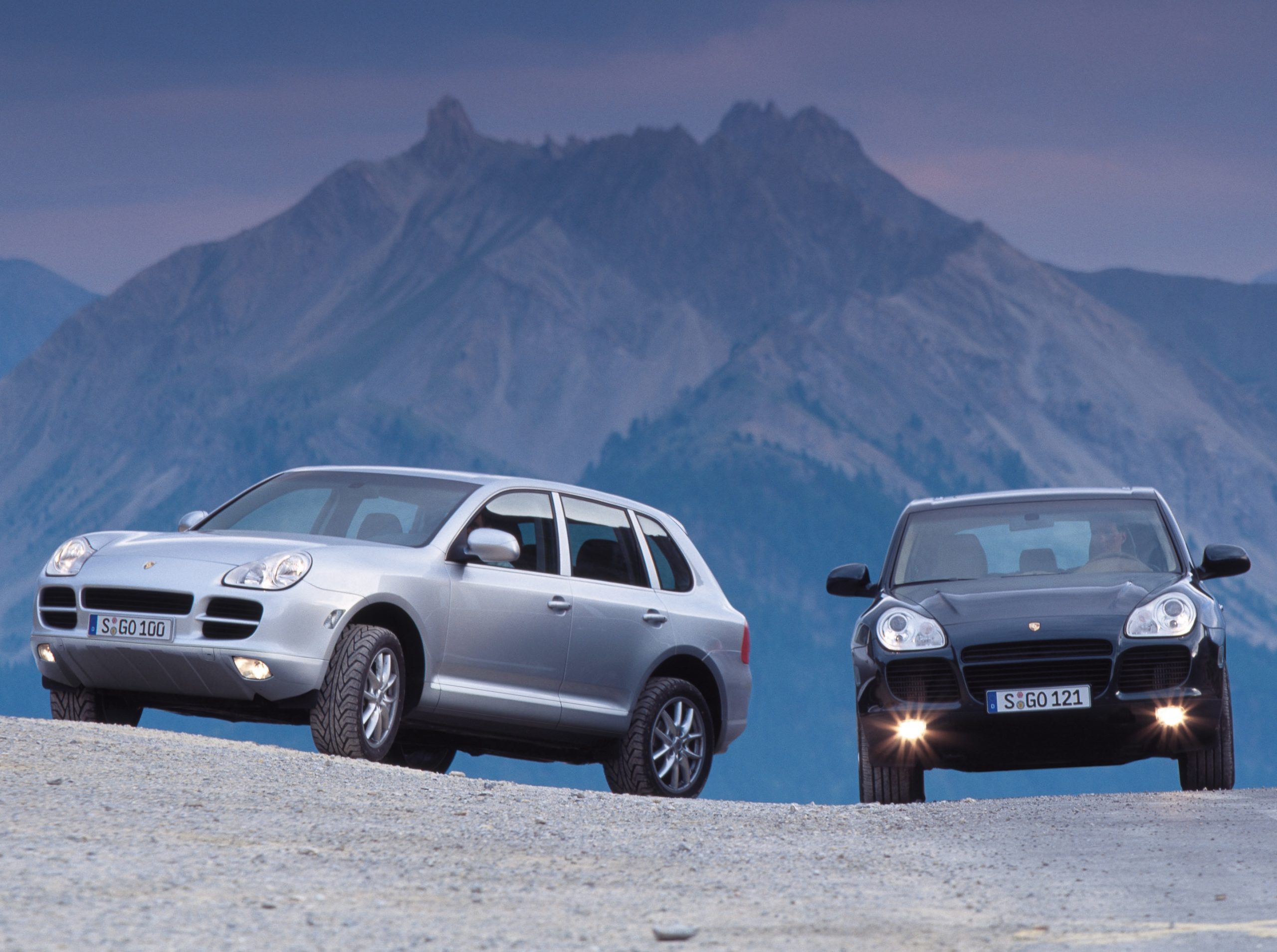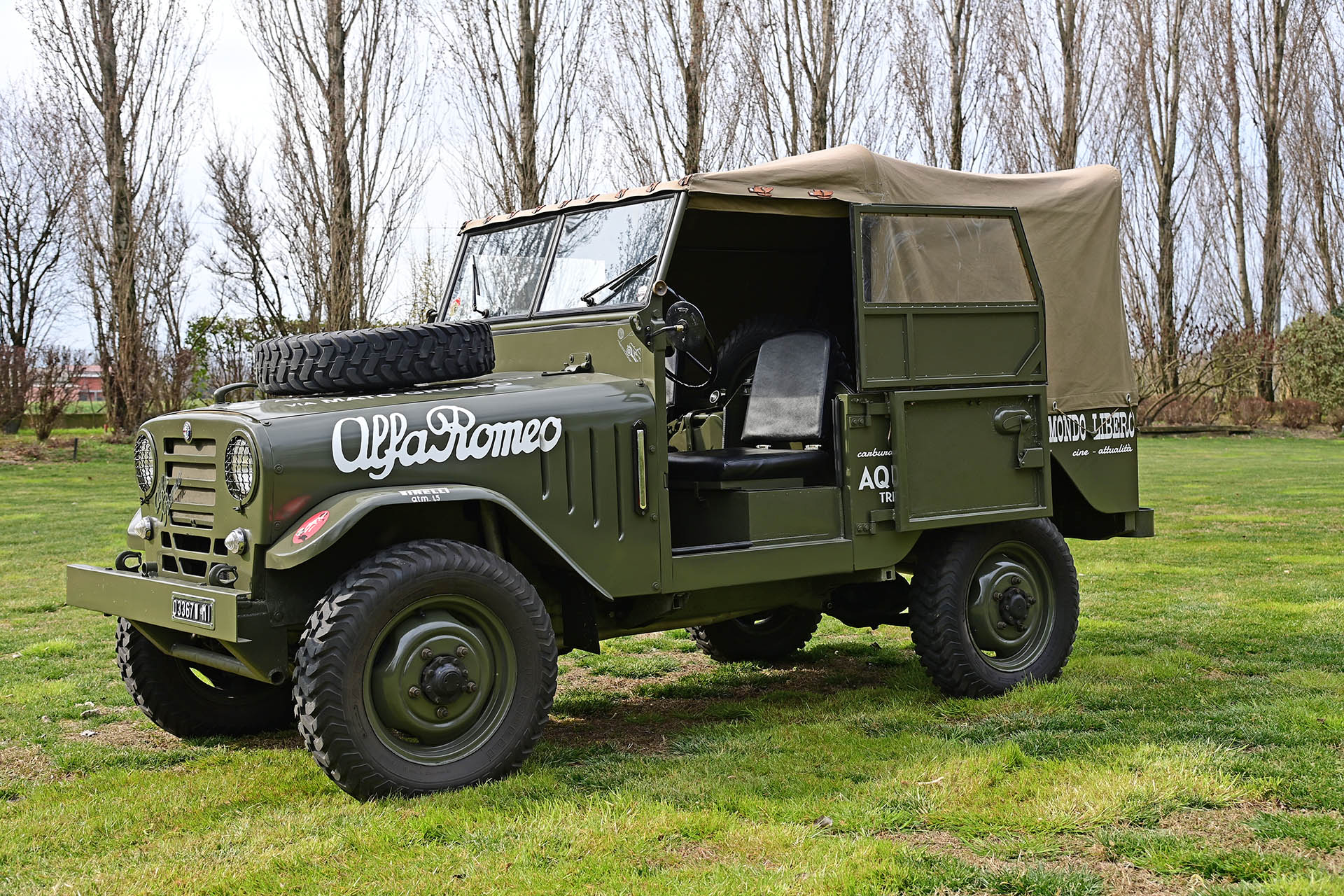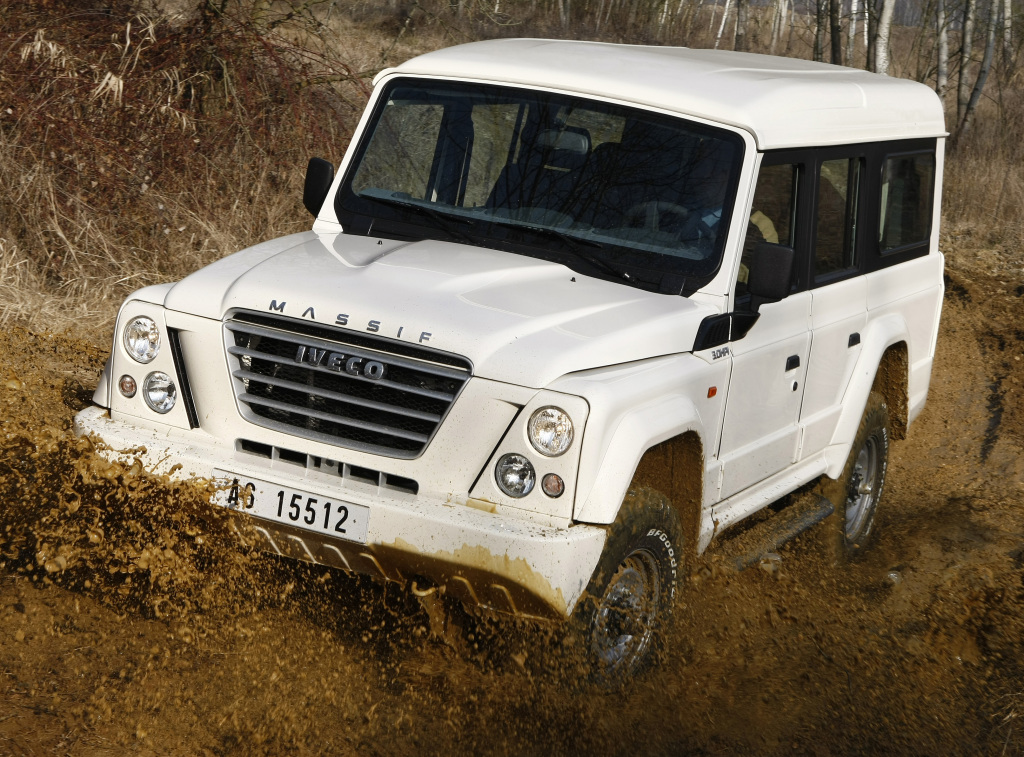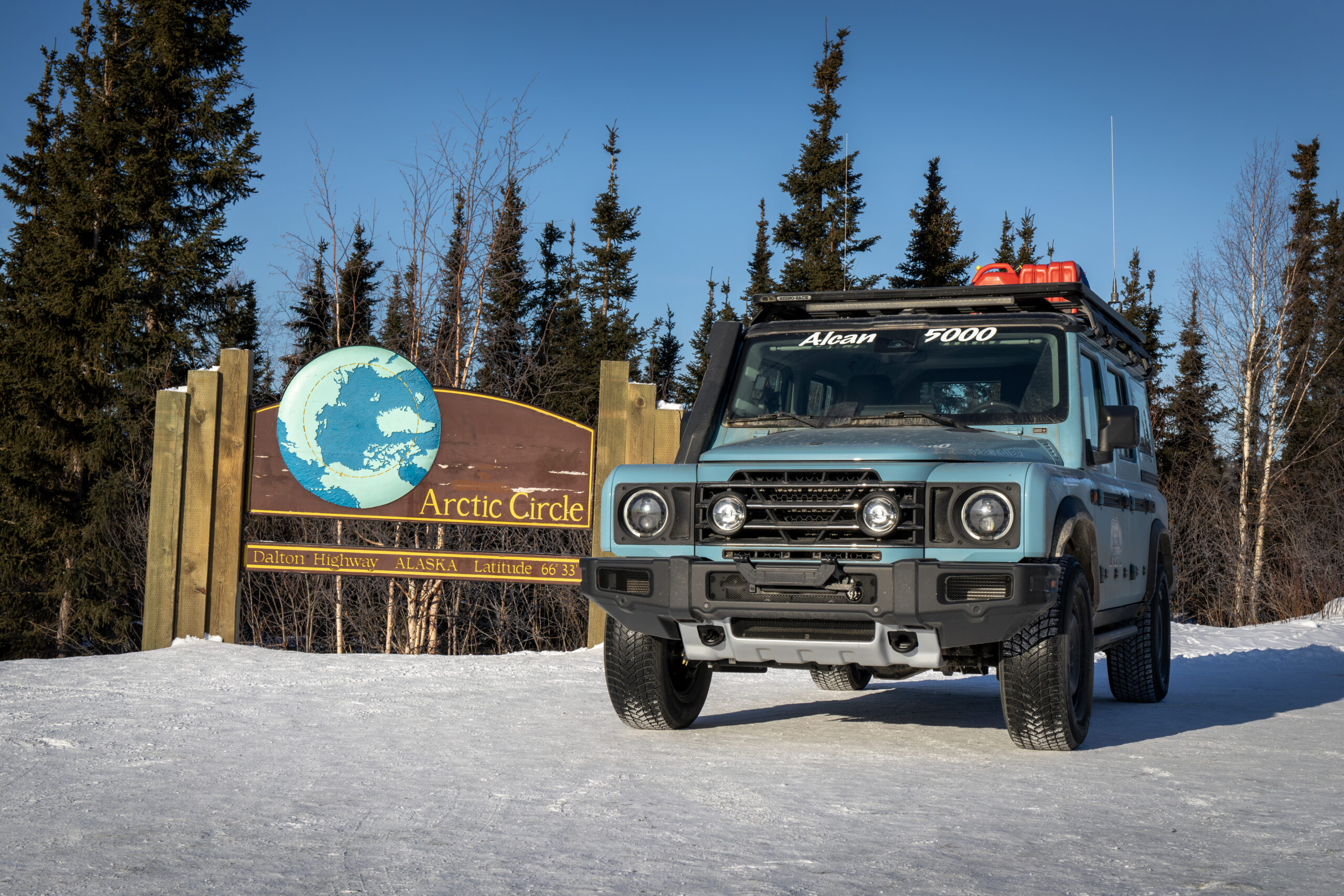Imagine 10 days filled with temperatures that plummet to near -40 degrees Celsius, white-out conditions that make your ordinary` upbringing seem like child’s play, and up to 650 miles per day of driving on snow- and ice-covered roads that are – at best – mediocre. This is the Alcan 5000 Rally, a 5000-mile time-speed-distance (TSD) competition that my husband, Andy, and I tackled earlier this year in an Ineos Grenadier Trialmaster 4×4.
Formed in 2017, Ineos Automotive is a new automaker manufacturing purpose-built, utilitarian 4x4s, and the Grenadier is its first model. (The second is the Quartermaster pickup, and a smaller SUV, the Fusilier, is on the way.) UK-based Ineos sells the Grenadier globally, and North American units went on sale early this year. The gruelling Alcan Rally is exactly the type of challenge the Grenadier is built to conquer.

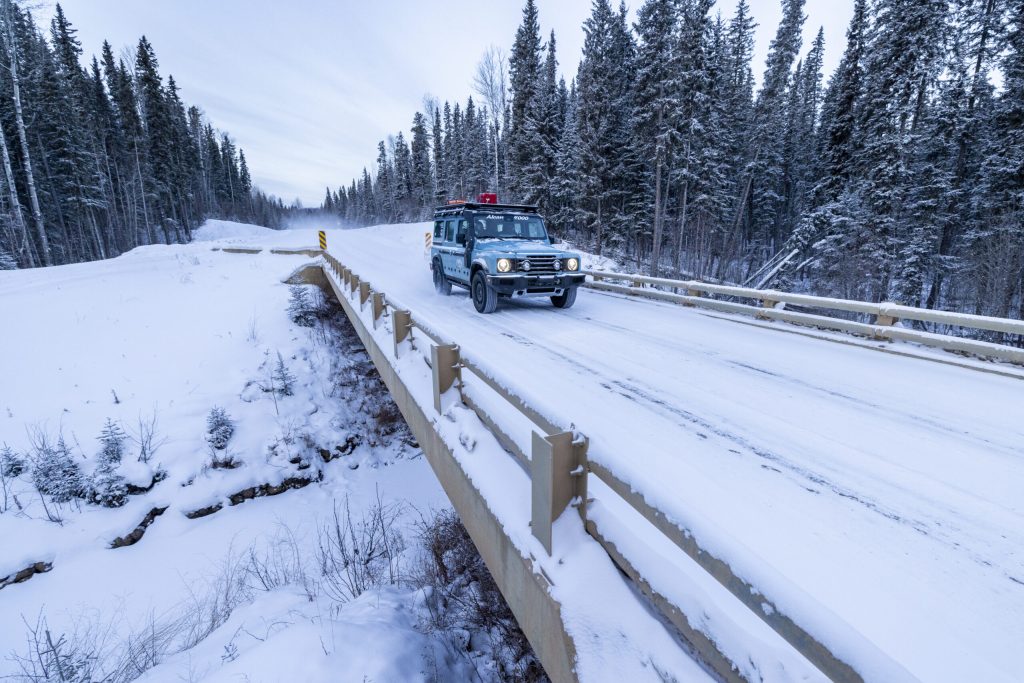
The 2024 Alcan Rally departed from Kirkland, Washington, on 21 February and snaked its way through British Columbia and Alberta to Yellowknife, Northwest Territories. Teams then headed westward to Whitehorse, Yukon Territory, before hitting Fairbanks, Alaska, an optional jaunt to Coldfoot, then down to Valdez, before finishing in Anchorage.
From prototype to podium, the burgeoning auto manufacturer risked it all for a chance to win – and it succeeded. But the win didn’t come without challenges.
Learning While Doing
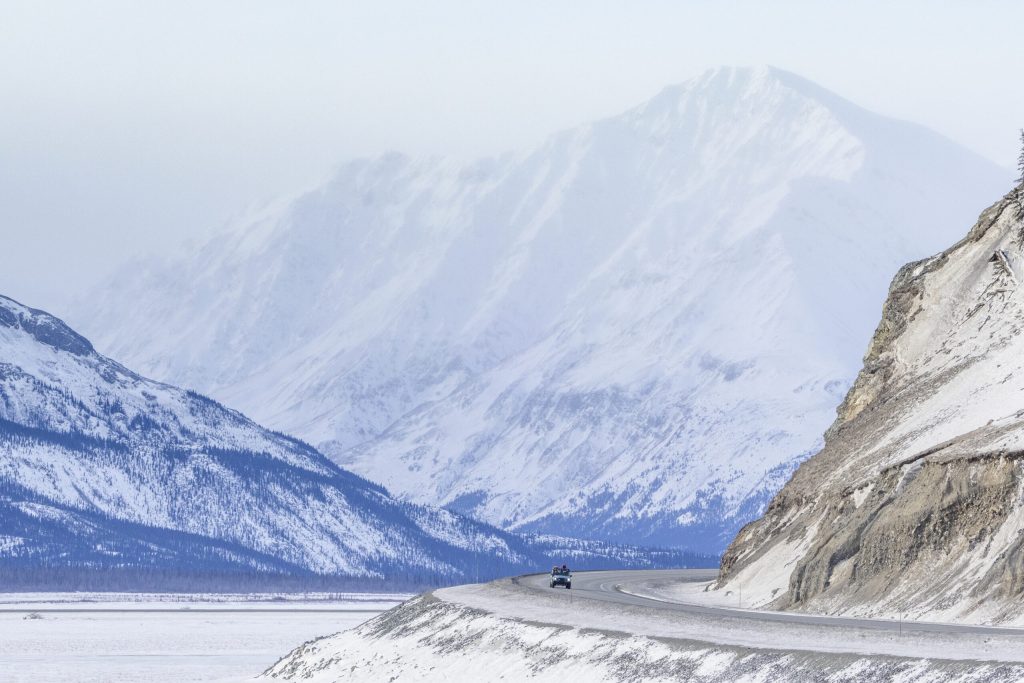
Andy and I are seasoned travellers and are prepared for nearly everything. We started competing in TSD rallies in 2018. These types of rallies aren’t sliding-sideways, go-fast competitions, but rather events based on precision. Teams must reference a route book written by the rallymaster to travel at specific speeds, follow exact directions, and arrive at certain points at intended times. The more seconds or minutes they are off of a rallymaster’s “perfect zero time,” the more points they earn, and the further down in the ranking they fall. Teams with the closest scores to the rallymaster’s perfect time at the end of the event win.
We successfully completed the 2020 winter Alcan 5000 Rally as privateers with our right-hand-drive diesel 1991 Mitsubishi Pajero. In 2022, we partnered with Subaru of America and piloted its new Outback Wilderness for our first summer Alcan 5000. For 2024, when we partnered with Ineos Automotive, we were the guinea pigs.
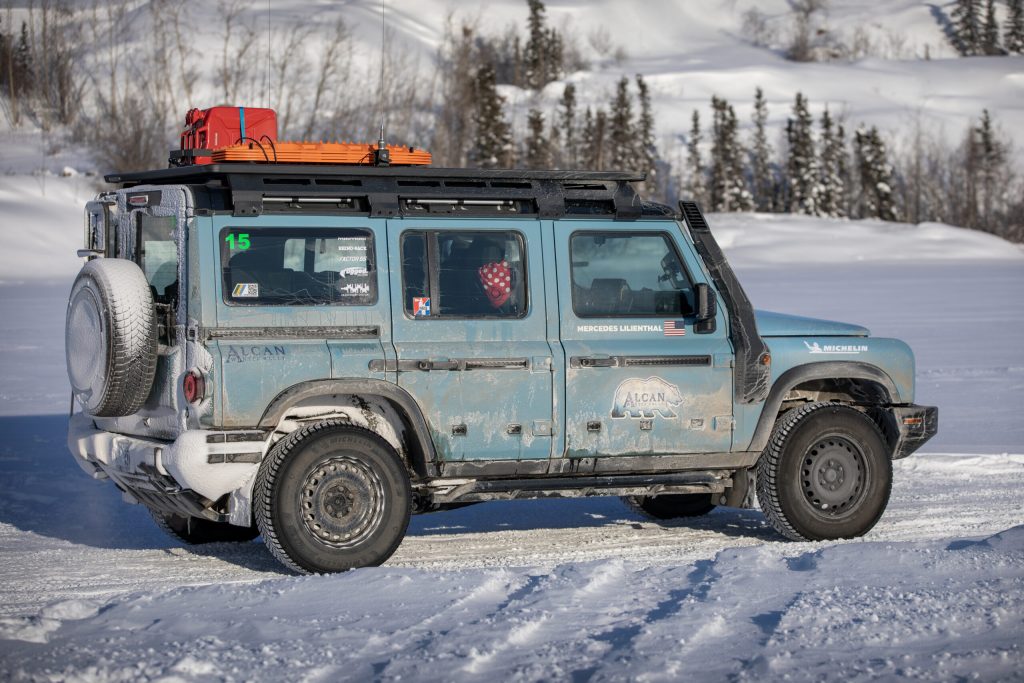
Our rally vehicle was a production-model Grenadier Trialmaster, which sells for approximately £75,000, including the roof rack, LED light bar, rock sliders, and rear ladder. This was Andy’s first time driving a Grenadier, especially over thousands of miles of pock-marked ice- and snow-covered roads. However, I had driven the diesel and gas 2B prototypes in France in early 2022. (Ineos Automotive first started building Grenadiers with 1B and 2B prototypes, then progressed with production try-out iterations, named PTOs for short. These included three rounds: PTO1s, PTO2s, and finally the most refined prototypes, the PTO3.) I was the first journalist from the Western Hemisphere to drive left-hand-drive and right-hand-drive diesel and gas 2B prototypes off-road. I later piloted the European production-spec models in Scotland in January the following year. I drove from Inverness to Glasgow, where the trek consisted of the natural environment with no premade off-road courses.
Andy and I did a lot of research on the Grenadier before leaving for the rally, relying on theineosforum.com and on our friend, Ben Meddows, who owns an early production-model diesel Grenadier. It turns out our Grenadier had a later software iteration than others. The infotainment centre’s Unit menu lacked the ability to change from mph to km/h. We were also told by Ineos the speedometer registered three miles-per-hour too fast.
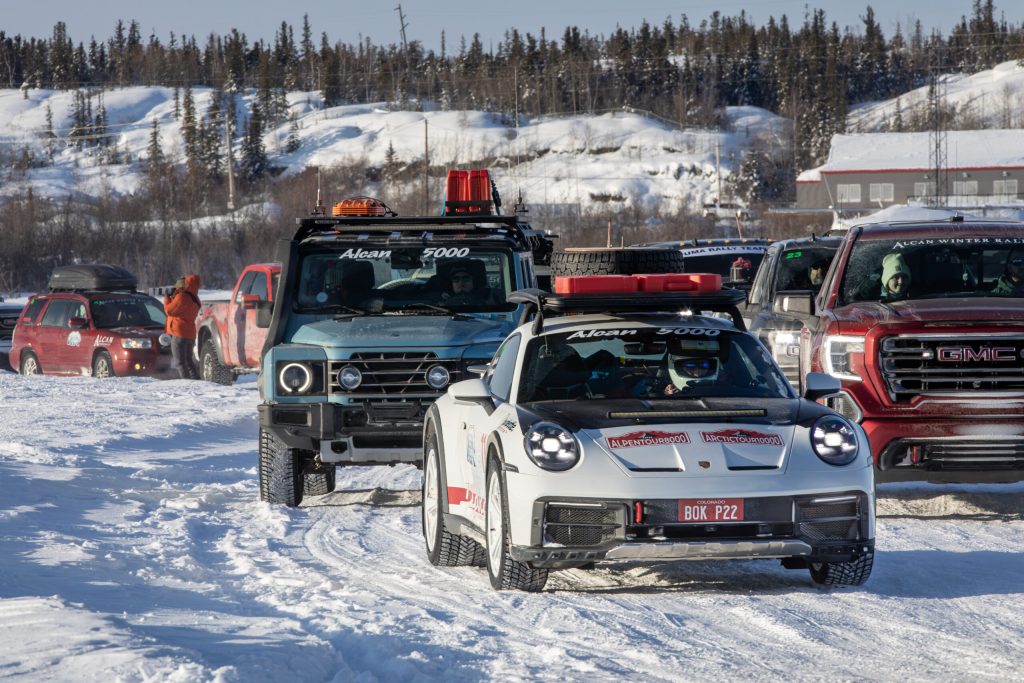
Though the rally was mainly run in Canada, which uses kilometres, the route book and its incremental odometer readings used miles. No one knew what our Grenadier’s digital display would register once we crossed the border into Canada. Would its front-facing camera automatically read the speed limits in kilometres? We would have to learn and adjust while on the move. Thankfully, the camera kept clear, even during blinding snow and road closures, like those from the Richardson Highway over Thompson Pass, on the way to and from Valdez, Alaska.
Quick Stats
The Ineos Grenadier Trialmaster has a turbocharged BMW B58 3.0-litre inline-six, a proven powerplant. The Grenadier has a 115-inch wheelbase, a body-on-frame ladder chassis, heavy-duty shocks, and solid front and rear axles, a 7000-pound towing capacity, and 10.4 inches of ground clearance. The vehicle kept us planted, even when severe cross winds wanted to blow us off ice-laden highways.
The Grenadier made short work of the deep snow and ruts on the ice racing track at Great Slave Lake, in the Northwest Territories. The course favoured vehicles with more ground clearance, and we took third place. The ground clearance allowed us to not worry about potholes, frost heaves, and things in the road.
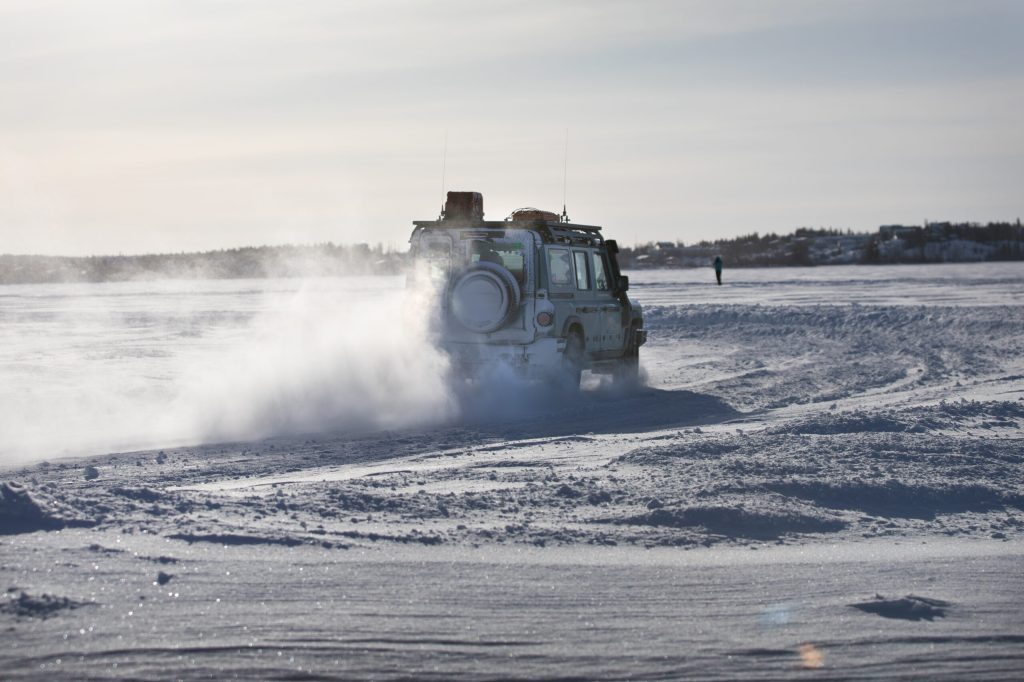
The Grenadier features a manually operated two-speed transfer case with 4H and 4L (the latter offers a 2.5:1 gear reduction ratio and is produced by Tremec), electronically actuated front and rear differential lockers with mechanical engagement, as well as a standard centre-locking differential.
Our Grenadier also had a front-mounted RED winch, factory-optional rock sliders, a rear access ladder, and a Rhino-Rack Pioneer platform roof rack that housed two jerrycans and four Maxtrax vehicle recovery boards. We also used Rugged Radios handheld radios for rally communications and carried along Factor 55 vehicle recovery gear.
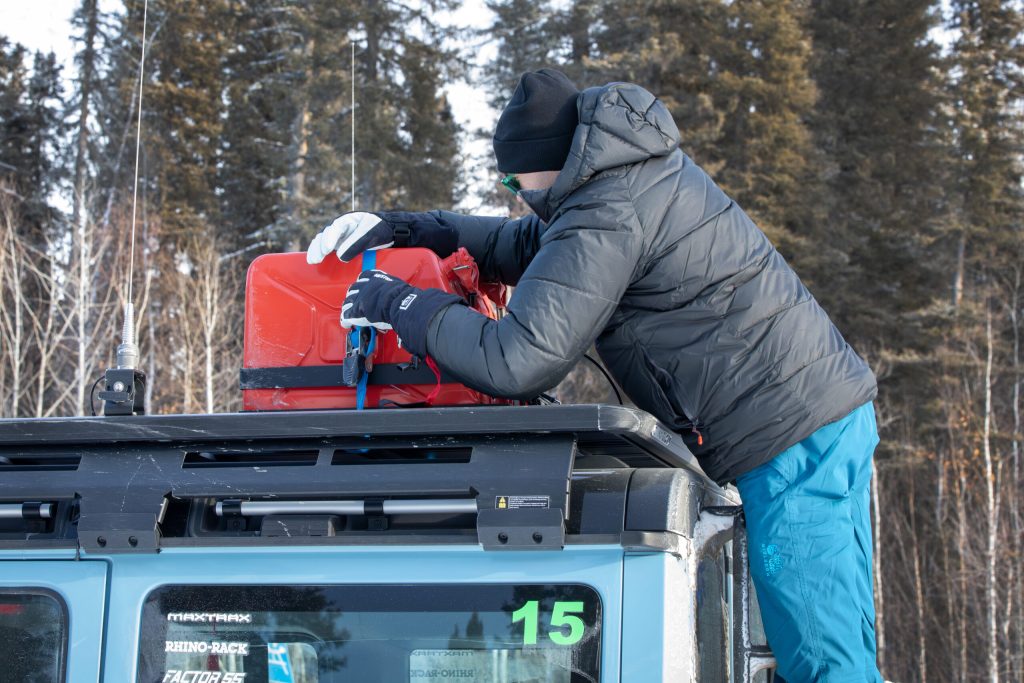
The Grenadier’s Interior
The Ineos Grenadier sports comfortable Recaro seats. Controls are arranged in a simple centre stack and in a ceiling panel studded with oversized buttons. “The buttons are large and easy to press, even if you are wearing gloves,” Andy said, “which allows easier use of some of the functions.” All three Grenadier trim levels – the base model, the Fieldmaster, and the Trialmaster – showcase off-road functions on an innovative ceiling-mounted panel. From deep-water fording and off-road mode to locker engagements and auxiliary lighting controls, it’s a command area focused on getting a Grenadier where it belongs: off the beaten path.
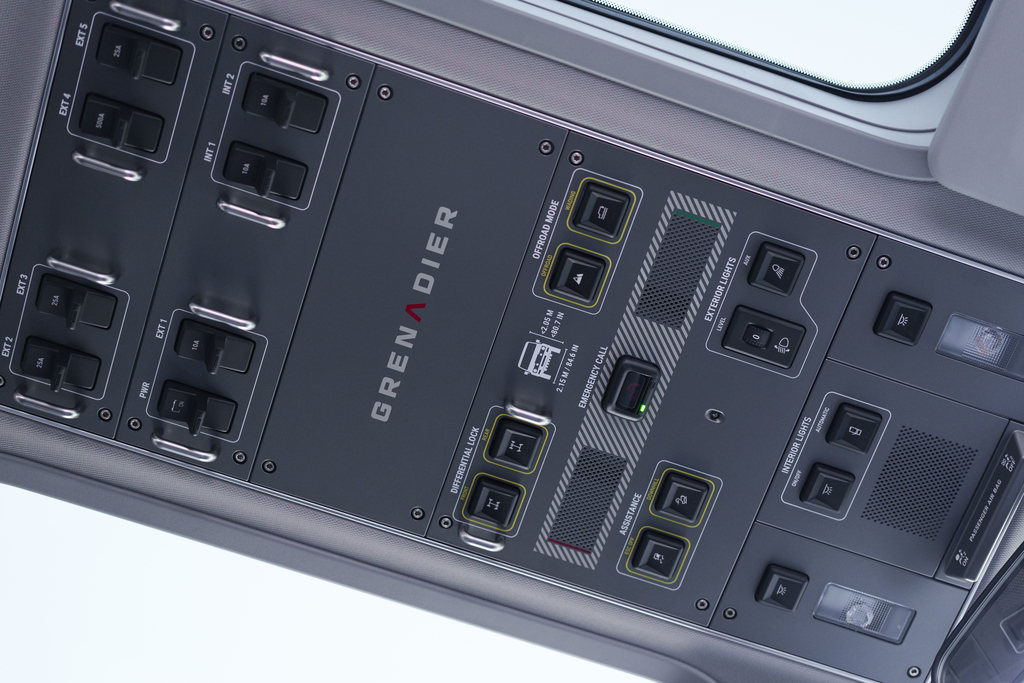
The four-door SUV also features a unique rear-cargo L-track system coupled with D-rings for ratcheting gear in place. Our Grenadier was supplied with eyelets that can move around on the L-track. That gave us lots of opportunities for securing cargo, which is important during a rally competition. D-rings are located throughout the rear cargo area and in both rear door jambs – a welcome surprise that proved instrumental in keeping cargo secured. Not only did this system keep our cargo secure during ice racing, but it also kept it in place when we unexpectedly braked for a pilot truck that told us to stop for an oncoming semi carrying 22-foot-wide construction steel girders on the Dalton Highway.
Crossing into Canada
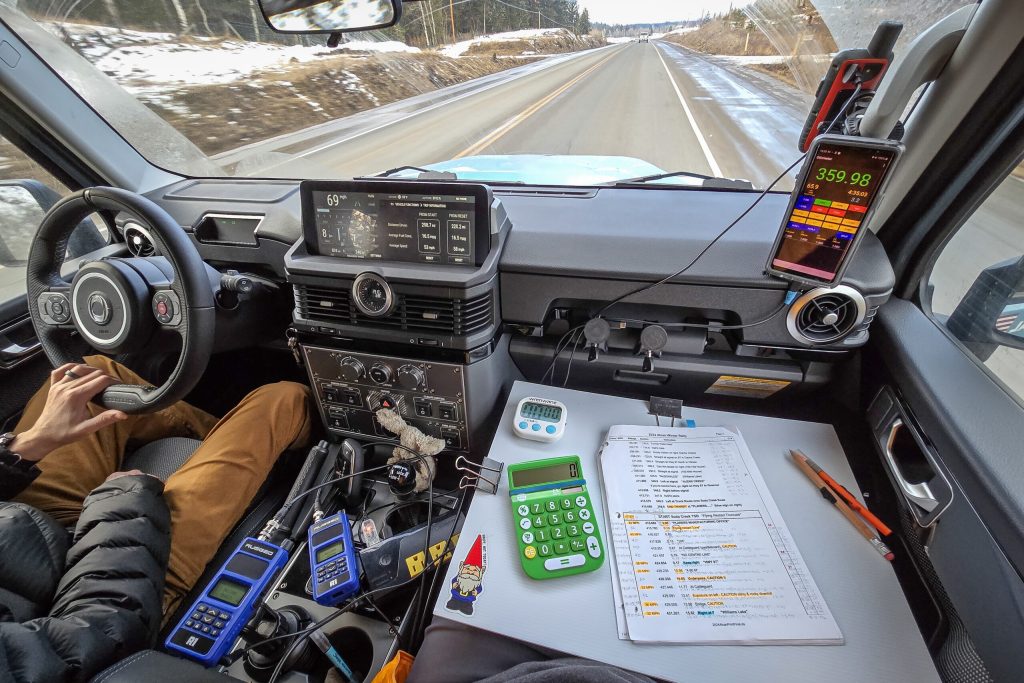
As we passed through the border, our Grenadier still gave us our speed in miles per hour but visually showed us speed signs in kilometres per hour. Additionally, a speed warning sounded whenever we exceeded specific prescribed speeds in km/h – not mph.
I wrote up a mph-to-km/h cheat sheet on my navigation board for Andy to reference at a moment’s notice. Doing the conversions wasn’t a big issue for us; at the time, we owned three right-hand-drive turbodiesel Mitsubishi 4x4s. Those vehicles only have speedometers that read in km/h, so we’re familiar with most of the major speed-limit conversions.
When we talked to Ineos about the issue, the company assured us it should be fixed with a later software update. So, we drove with the Grenadier running the speedometer in miles and referenced the speed warning clicks, my cheat sheet, and our GPS odometer along the way.
Overall Driving Impressions
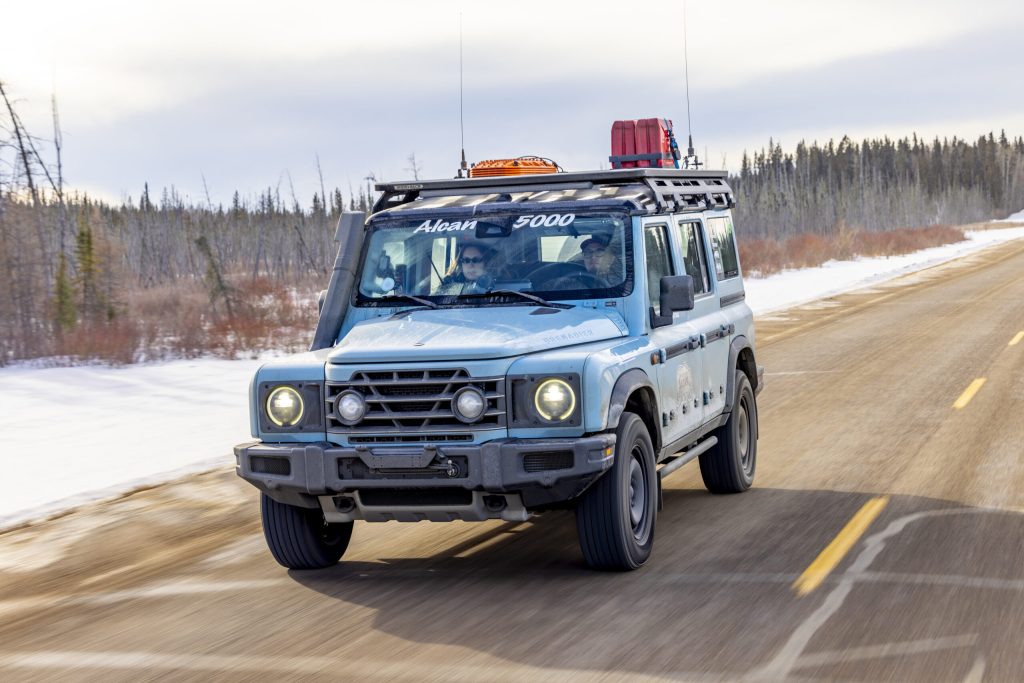
The build quality of the Grenadier feels quite solid. The doors close with a resounding thunk, and everything has a nice sort of haptic feel to it. All the things that move have this well-made, premium feel. That it was also quite comfortable was a bonus.
From a driving perspective, the suspension was great on bad roads, through potholes, and over massive cracks. “When you’re going 50, 60, and 70 miles an hour, it doesn’t upset the chassis,” Andy said. “Some solid-axle vehicles offer a rubbery kickback or an uncontrolled feeling. But the Grenadier is planted and performs well at speed.”
The Grenadier Trialmaster trim normally comes with BFGoodrich KO2 all-terrain tyres, but we opted for dedicated snow and ice tyres, per the rules of the Alcan Rally. The fitted studless Michelin X-Ice SNOW tyres performed well in the white stuff, despite not having big lugs or deep grooves.
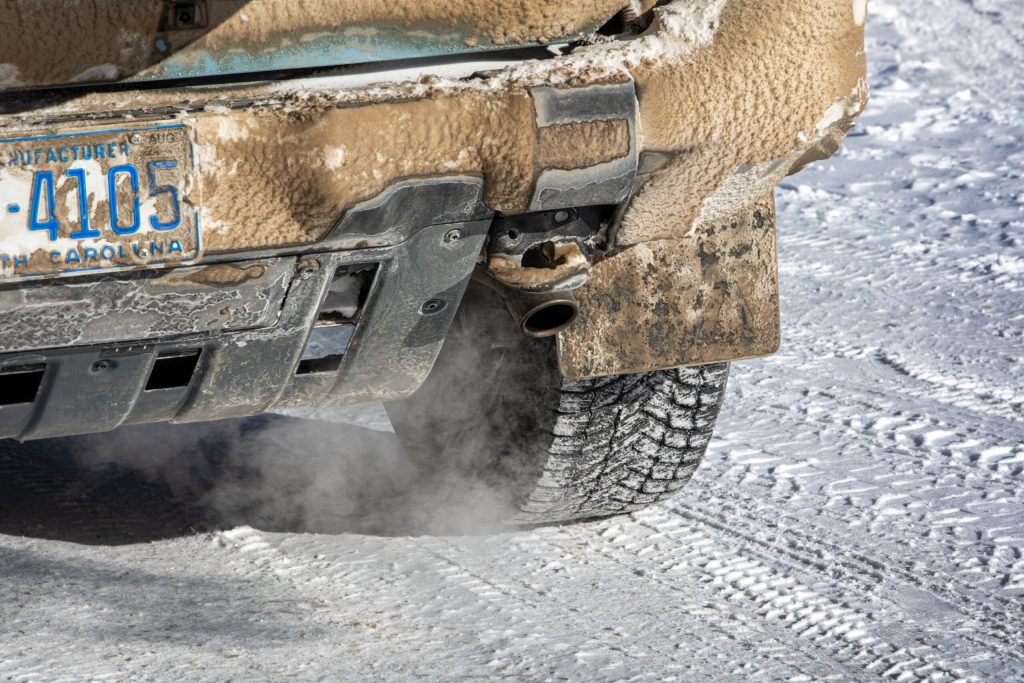
Engine Performance
The BMW six in our Grenadier had plenty of power and good torque, and we never longed for more. Paired with a ZF high-speed transmission, we were able to get past people quickly, and when conditions permitted, we could cruise comfortably at 70mph speeds to make miles.
Using manual mode allowed Andy to hold the prescribed speed better than in full automatic; in automatic mode, the Grenadier displayed a tendency to speed up or slow down if he held a gear and a specific rpm. Manual mode allowed our team to be more competitive in the TSD sections, where holding a consistent speed is important.
Things to Improve
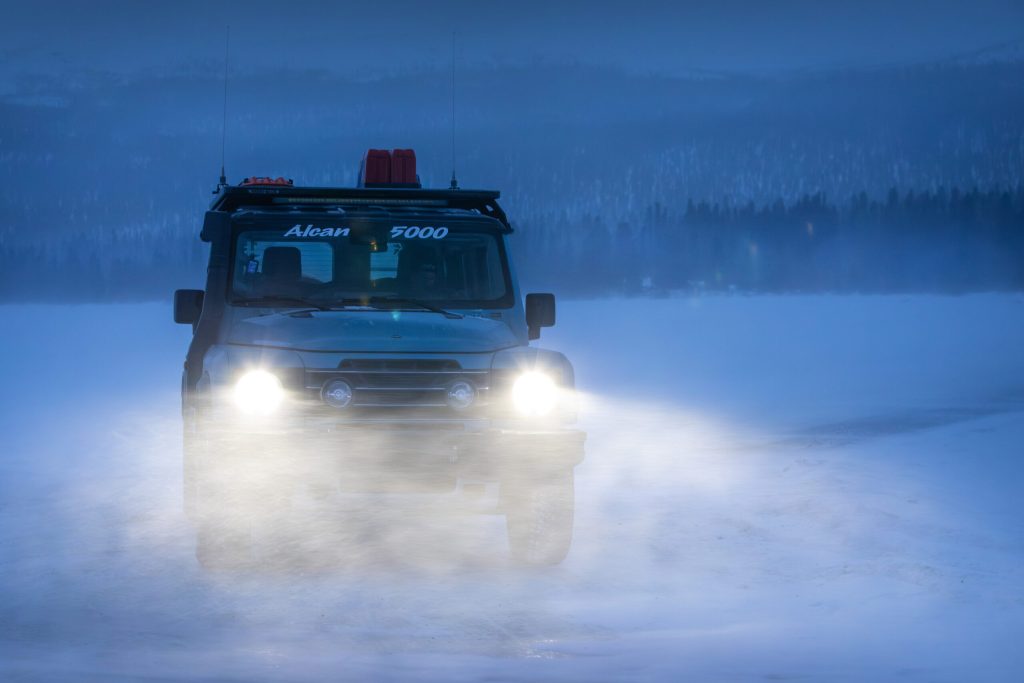
“We had good front and side visibility out of the Grenadier,” Andy said, “but the rear visibility is not stellar, because of the 70/30 split door. Plus, the glass is smallish.” The rear ladder, too, obscures the rear view.
Andy and I learned that we could only use our grille lights in off-road mode. And off-road mode turned off automatically when we surpassed approximately 30 or 35 mph, cutting power to those lights. This made it more difficult to see wildlife in low-light conditions. The mode also shuts off certain safety features, like traction control, stability control, and so on, for better off-road performance. However, when we hit the magic speed, those systems would come back, changing the driving dynamics of the SUV. We’d like to see the grille lights able to be used at any time, not just in off-road mode. We’d also appreciate it if the Grenadier would warn the driver that off-road mode was about to shut off so that you could prepare for the switch.
Noted Quirks
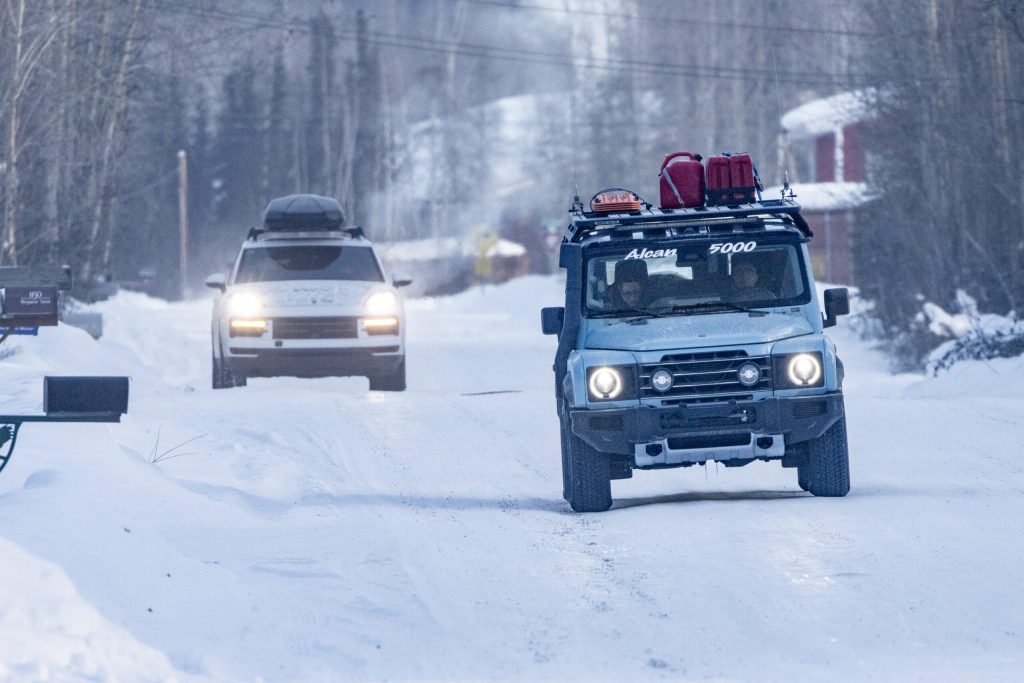
Andy felt that the ergonomics were a bit of a mixed bag. The steering wheel feels really great in the hands, for instance, and all the controls on the wheel work very well. Your odometer reset is on the end of the stalk, which makes things easy.
“However, some of the buttons on the climate control are hard to use. It has a three-dial system, which is easy and intuitive, but the climate control is quirky and takes a while to change from the face to the feet, and the feet to defrost, et cetera. The defroster or ‘demister’ works well, but it only has one speed, which is very high. So, when you have to defrost or de-ice the windscreen or windows, you have to go full blast all the time. That gets irritating on your eyes, but it does work well. The heater is very hot, but there doesn’t seem to be much other than very hot or very cold.” We hope the system will be better adjusted moving forward.
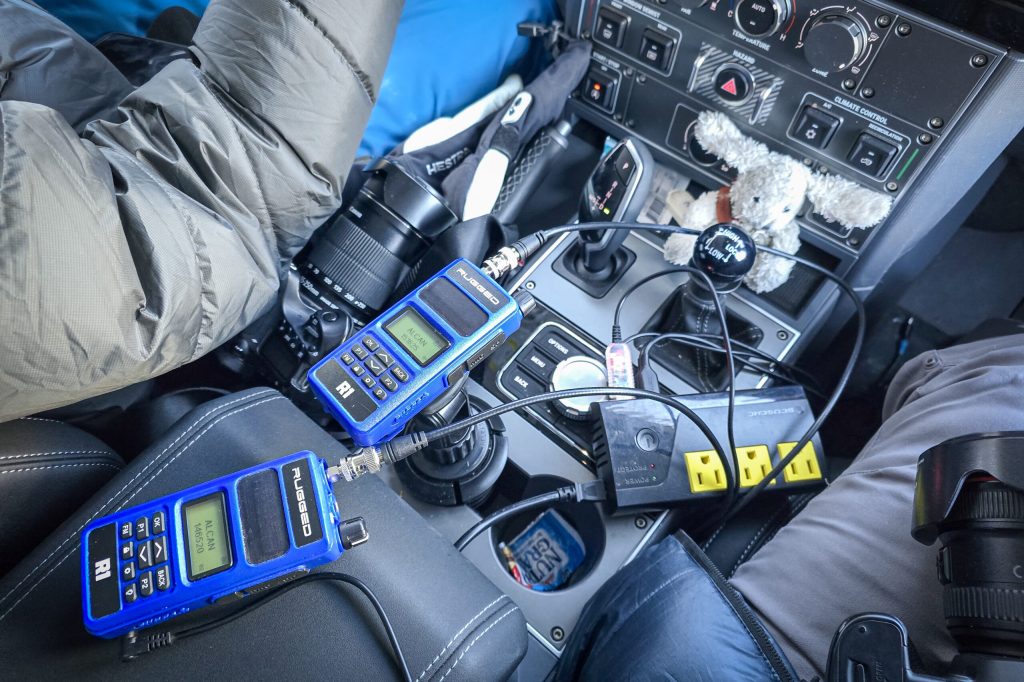
The Grenadier’s infotainment is finicky, has too many menus, and requires a steep learning curve. Operating the transfer case takes some getting used to, as well. “It’s not just a standard pattern, where it’s back or back and forth. You don’t pull it back to put it in,” Andy said. “There’s an H pattern to it, so it’s more like a Land Rover. That’s something I needed to get used to. Also, the locker engagement can be a bit tricky and take some getting used to.”
Try It, Test It, Win It
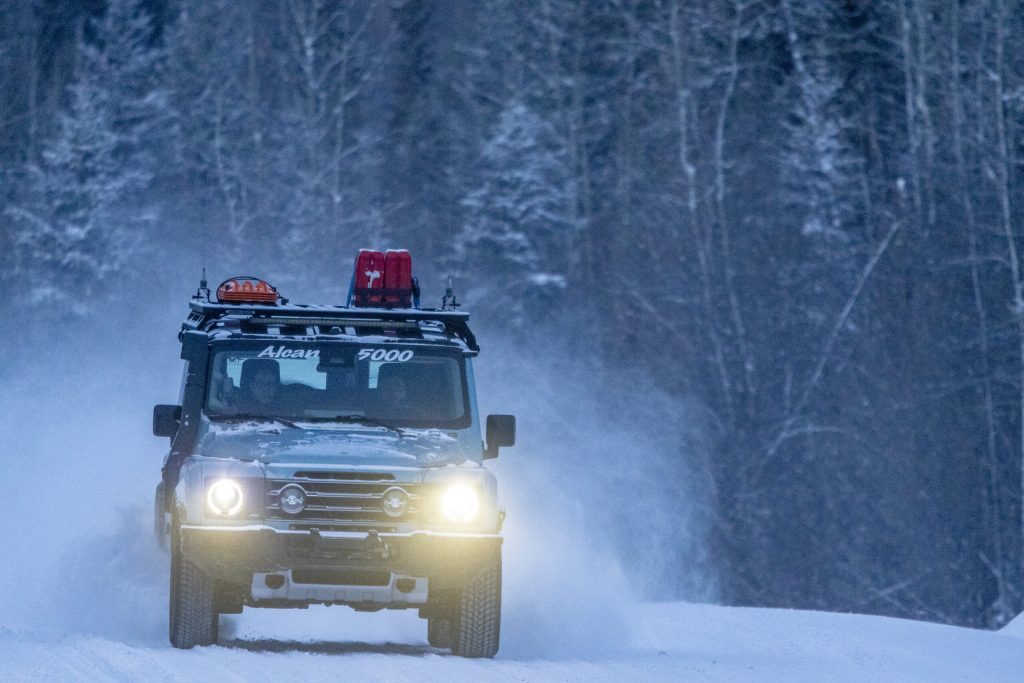
Andy’s tip to anybody who buys a Grenadier is to go out and test it, whether that’s in a field, during the Alcan 5000 glancing at moose, or in your driveway. Learn how the four-wheel-drive system works. Learn how off-road mode works. Familiarise yourself with the infotainment, because the system is not cookie-cutter. A lot of the systems on a Grenadier simply operate differently to a traditional four-wheel-drive vehicle. “Spend the time,” said Andy, “get to know it, and I think you’ll be rewarded.”
The Ineos Grenadier Trialmaster 4×4 is wonderfully utilitarian and a great mix of off-road performance, utility, and style. We scrambled our way to the top of our class, taking the win over 16 other trucks and SUVs in the 2 SOP (Seat of Pants) segment. We also came in 10th overall of 36 total teams. Andy and I also earned Go Farther and Arctic awards for completing all optional extreme endurance routes and for successfully completing the competition. All this from a young-gun automaker and a husband-and-wife rally team willing to go the extra mile, deep into the frozen abyss, to test a vehicle’s capabilities.

